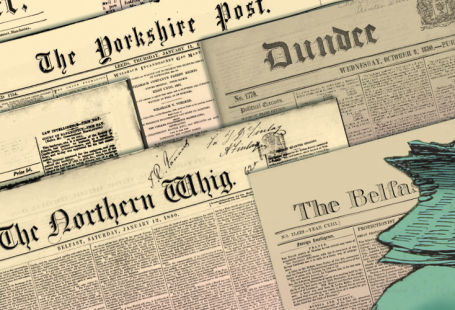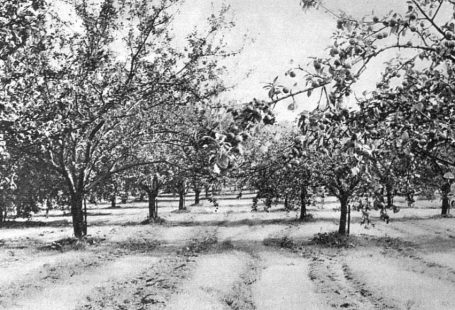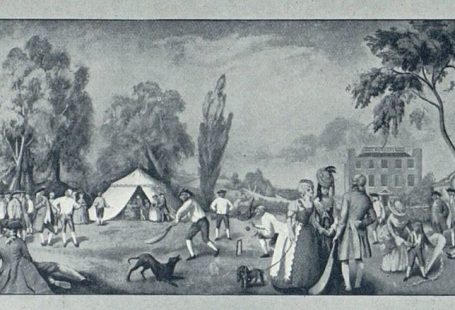
Last night, during Who Do You Think You Are? we searched through Liz Bonnin’s family tree and discovered her Indian and French heritage. This week’s episode opened with gorgeous views of a sun soaked beach and crashing waves, making us all envious as we watched by our fires and with hot cups of tea in our hands. The first part of the episode took us to Bonnin’s mother’s home in Trinidad to find more clues about Liz’s Indian ancestors. Early in the episode it was revealed that Liz’s family were significantly involved with the Presbyterian Church in Trinidad. By using The British Newspaper Archive, we are able to follow the story of the Presbyterian missions and see how they grew and developed at the same time that Liz’s family were establishing a new life in Trinidad.

In 1877, a correspondent of the London Evening Standard from Port of Spain, the capital of Trinidad, described the island as a paradise for the naturalist, ‘abounding in zoological and botanic treasures’. It would have been a wonderland for someone like Bonnin, who later received her masters in wild life biology. The revelation of Bonnin’s Presbyterian connections came from an obituary detailed that Liz’s great-aunt Sybil Rawle was instrumental in establishing the Susamacher Church in San Fernando. Susamacher means Church of the Good News and today is has the largest Presbyterian membership in Trinidad. The Susamacher Church is not mentioned frequently in British newspapers, but we did find one report from the Exeter and Plymouth Gazette in 1933, which listed the church, among many others, who were to receive a specialised organ produced by the west country firm, Hele and Company, Ltd. The company built organs specially designed to withstand the climate of Trinidad.
Presbyterians first arrived in Trinidad in the 1830s. A small mission was established by American Presbyterians in lere Village, in south Trinidad, but by the 1860s it was about to fold. At that time, Reverend John Morton from Nova Scotia arrived and took over the mission. Rev Morton extended his mission to the East Indian community who were working on the sugar estates.
After slavery was abolished in 1838, thousands of people from India arrived in Trinidad as indentured labour. The Inverness Courier reported on 3 October 1867 that around 18,000 indentured workers had arrived from India in the last 22 years. Indians were contracted to work on the sugar plantations for a set period of time, usually about 5 years, in return for the cost of their travel and lodging. After their employment was complete they could stay in Trinidad or return to India.
In 1873, one year after the arrival of Bonnin’s ancestors from northern India to Trinidad, a letter from Rev Morton was published in the Glasgow Herald describing the lives of the indentured Indian workers. The 19th century newspapers refered to indentured Indian workers as “coolies”. In modern times, the term has been used as a derogatory racial slur. In the letter, Morton describes how many indentured labourers are able to save enough to purchase plots of land. In 1873, the Paisley Herald and Renfrewshire Advertiser reported that 5 Indian workers were able to purchase their own sugar estate for $18,000. The workers were allowed to come and go on the estates as they pleased. Morton described a relaxed atmosphere on the sugar estates.

The letter also detailed that younger Indian children attended school after they completed their tasks for the day. Rev Morton helped to open dozens of schools between 1871 and 1881. Timothy Sirju, Liz Bonnin’s great great grandfather, attended and later taught at one of these schools.

Although it is difficult to follow local news or events of Trinidad through the British newspapers, one can search for news from the Presbyterian missions. In 1870, Rev Kenneth Grant set up a mission in San Fernando. A report from the Alloa Advertiser on 11 March 1871, stats that ‘the little congregation at San Fernando…was not only self-supporting, but contributed £20 during one year to the mission causes promulgated by the Church.’ Most likely, this was the mission that Liz Bonnin’s family was associated with once they arrived in India.
The British Newspaper Archive is an excellent source for news across the world and not just within Britain. National, as well as local, newspapers reported on world events and as we have read in these examples, they also reported on the work of British people or religious groups abroad.




